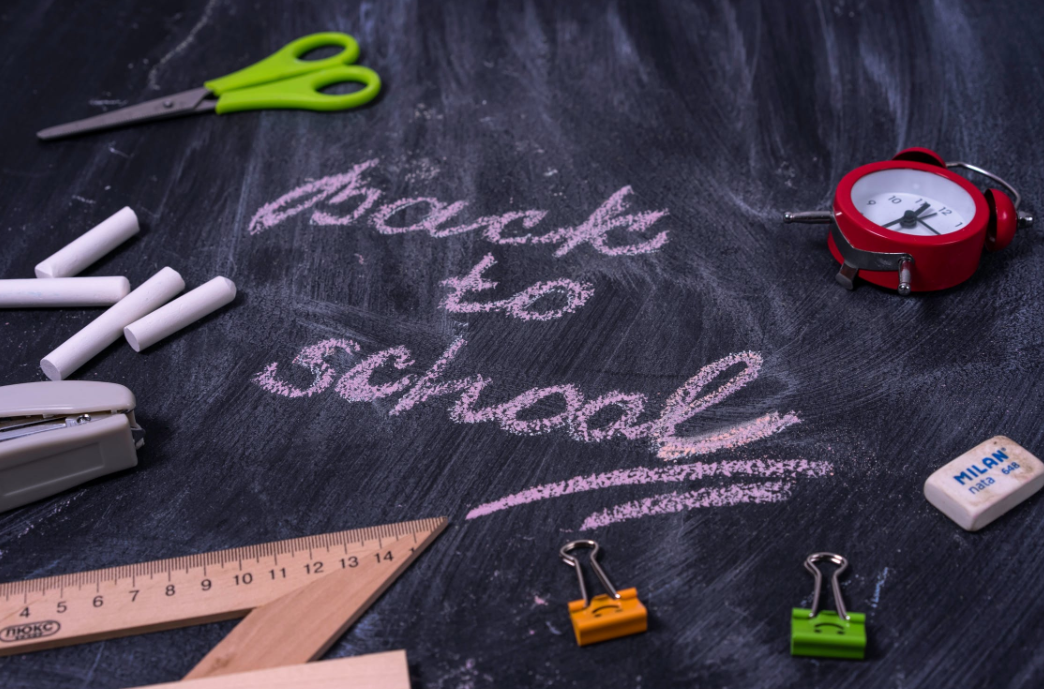
Back to school shouldn’t mean back and neck pain in children
It’s back to school time again, which means that children all around Australia are going to be putting on their backpacks, grabbing their iPads, books, heading to class and putting themselves at higher risk of a back, shoulder and neck pain.[1] The combination of under developed musculoskeletal systems, physical activity, sitting in class and looking down at screens is the perfect storm for causing a number of painful issues for children.
Two of the most common questions parents are asking at this time of year are:
What is the best backpack for my child? And,
How long should my child spend on their iPad?
The importance of the right backpack for neck and back health
A correctly fitted and outfitted backpack can help protect your child from unnecessary neck, back and shoulder pain. Did you know that a bag of a reasonable weight can actually be of musculoskeletal benefit to a school child? As long as the backpack is fitted well, this weight bearing activity can help to protect their backs in the long run by strengthening their back and providing the physical benefits of exercise while walking with it.
Conversely, the wrong school bag filled with heavy books and lunches are a prime cause of back pain in children and can even lead to long term damage and malformation of the bones. Usually this is due to inappropriately sized bags, not carrying the bag correctly (on one shoulder) and too much weight.[2]
How do I choose the right backpack?
- Put comfort and fit at the top of the priority list
- Make sure the backpack is properly sized – no wider than your child’s chest
- Choose a backpack with broad, padded shoulder straps
Once you’ve found the right backpack:
- Place heaviest items at the bottom, close to the spine for better weight distribution
- Don’t overload the backpack – REMEMBER; moderate weight IS NOT harmful to your child’s back
- Never sling the pack over one shoulder
- With a good fitting back pack, let your child walk with the backpack for strengthening their backs and giving them exercise.
- Use waist straps attached – they are there for a good reason
- Don’t wear the backpack any lower than the hollow of the lower back
What is ‘tech neck’ and how can I help my child avoid it?
Recent research is showing that bad tech habits picked up by children now can cause musculoskeletal issues in adulthood, even in childhood. Even though experts advise that children should only spend 30 minutes or less on these devices at a time, many are spending far more than this at school and at home. Think about this: Using an iPad for 2 hours a day is over 700 hours per year of holding the head forward in a bent position looking downwards, weakening the muscles and ligaments of the spine.
A recent Curtin University study looked into children using laptops and tablets and the pressure it puts on their bodies.[3] Researchers found that laptop use while seated at the coffee table, side-lying on the bed and tablet use while side-sitting on the floor involved postures deemed most risky, warranting immediate remedial action.
Some tips to help your child safely enjoy their iPAD:
- Take frequent breaks
- Move regularly
- Use the iPAD on a stand as close to eye level as possible.
- If your child is not at a desk prop up the IPAD with a pillow or cushion
- Never rest the iPAD in your lap
- Vary your positions
- Don’t type with the iPAD flat on the desk
Exercises your child can do to break up time on the iPAD include:
- Backward shoulder rolls
- Shoulder blade pinches
- Making a double chin
- Gently stretch your head from side to side taking your ear to the shoulder
- Looking up to the sky
If your child is having back, neck, shoulder or posture problems, feel free to make an appointment with one of our physiotherapists. We will be able to assess your child’s back, give the best treatment, exercises and knowledge to ensure they can stay injury free and recognize the signs of a sore neck and back.
[1] Gheysvandi, E., Dianat, I., Heidarimoghadam, R. et al. Neck and shoulder pain among elementary school students: prevalence and its risk factors. BMC Public Health 19, 1299 (2019). https://doi.org/10.1186/s12889-019-7706-0
[2] Negrini, S., & Carabalona, R (2002). Backpacks on! Schoolchildren’s Perceptions of Load, Associations with Back Pain and Factors Determining the Load. Spine, 27(2), 187-195.
[3] Ciccarelli, Marina & Chen, Janice & Vaz, Sharmila & Cordier, Reinie & Falkmer, Torbjorn. (2015). Managing children’s postural risk when using mobile technology at home: Challenges and strategies. Applied Ergonomics. 51. 189-198. 10.1016/j.apergo.2015.04.003.



